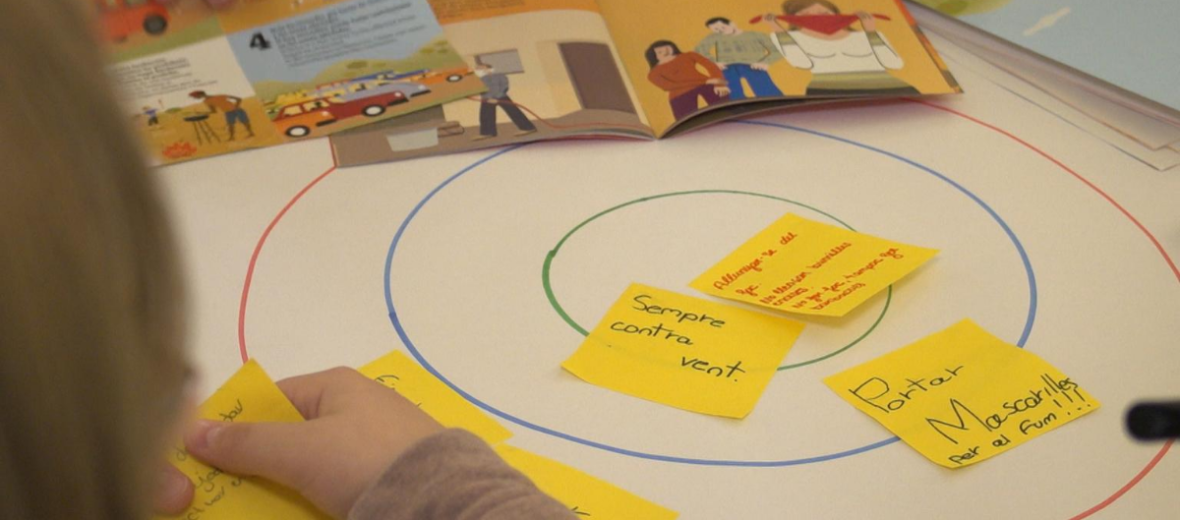
PyroLife International Symposium: Towards an Integrated Fire Management
Highlights from the eighth PyroLife Symposium webinar on July 22, 2020 by Isabeau Ottolini and Kathleen Uyttewaal.
On July 22, Míriam Arenas Conejo, a sociology researcher and professor at the Open University of Catalonia, joined us for our last PyroLife Symposium panel. She shared with us several profound social aspects to consider, both in the world of fire and in the broader events that are typically considered as “natural disasters.”
Often, we talk about “society” in general terms and forget about all the complexities present in every community. As we consider social analysis in fire, Míriam encourages us to meditate on these particular axes:
- How social vulnerabilities are intimately connected with disasters
- Consider the lessons we can learn from social groups often left out of disaster dialogues, like children.
- Acknowledge complex and dynamic social realities
- Get to the root causes of vulnerability
First, let’s change the way we talk about disasters. There are no ‘natural’ disasters: they are subject to strong social components that influence in the disaster’s emergence and impact. Recognizing this, the United Nations Sendai Framework for Disaster Risk Reduction points to creating research, policy and action that is inclusive, accessible, and engaged with people most vulnerable to the effects of disasters.

The CUIDAR project reached for many of the Sendai Framework’s goals by centering the voices of children and young people in disaster resilience. It consisted of 3 phases: 1) A robust review on youth engagement in disaster risk reduction 2) Participatory processes and 3) Creating a child centered disaster management framework.
Children from Barcelona (in a highly urbanized but underserved neighborhood on the outskirts of the city) and Gandesa, Spain (in a rural community), identified wildfires as their main concern in their communities, and illustrated some key lessons:
In Barcelona, the children first considered the nearby forest as a risky and fire-prone environment, but through mutual learning with other stakeholders, they learned more about its resources and benefits. These children were also great connectors and mobilisers within their communities, which may have been due to the influence of their working-class neighborhood with its long history of solidarity movements. Meanwhile, in Gandesa, wildfires pose an increasing problem due to factors such as rural depopulation. In this setting, intergenerational knowledge and memories of past disasters aside from fire were strongly present (i.e. the nearby presence to both a nuclear power plant and a decisive battlefield of the Spanish Civil War), which also points to the need of considering multiple risks when conducting participatory research with communities. Moreover, these combined experiences highlighted the need to include emotional management when talking about risk education & communication.
To work with vulnerable groups means not only to see reality from different standpoints, but to identify missing gaps, question and reframe research, and co-create innovative solutions through mutual learning. It is also a matter of social justice and human rights. Looking at the complex and dynamic social reality can be compared with looking through a kaleidoscope: many patterns and colors of social relations exist, and just a slight movement can change everything. Moreover, many aspects affect these relations: history, policy, politics, geography, and great global changes like COVID-19 and climate change.
As researchers, Miriam urges us to introduce intersectional perspectives to gain a better understanding of the social landscape around us: to gain awareness of our own privileges, understand power relations, and enable all actors’ agency regardless of the situation. How to start? Listen and learn from the communities you want to work with, work to center the narratives of the most vulnerable and situate research that will better fit with their needs, and pay attention to what is happening now rather than try to change what may happen to less vulnerable groups in the future. Míriam ended her preSsentation with a poignant message, which we truly feel needs no further explanation:

Click here to watch Miriam’s presentation (22 July 2020).
Photo credit for featured image: CUIDAR




Pingback: Webinar Pyrolife (2). Míriam Arenas Conejo: “Complejizando el análisis social en la gestión de riesgos” | CareNet
Pingback: Webinar Pyrolife (2). Míriam Arenas Conejo: “Complexificant l’anàlisi social en la gestió de riscos” | CareNet